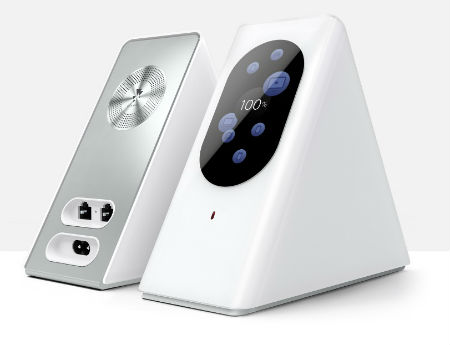Starry Launches 200-Meg Wireless Broadband Service in L.A., Washington, D.C.

Starry, the startup that has developed a competitive broadband service that uses millimeter wave technologies, said it has launched a beta version of its 200 Mbps offering in parts of Los Angeles and Washington, D.C.
Those launches expand on Starry’s earlier beta service debut in the Boston area.
Update: Starry said service is available in "select areas" of Washington, D.C, and Los Angeles, but expects to expand there similar to how it has broadened its rollout in Boston, which started as a closed beta and is now passing more than 240,000 homes.
Starry said it expects to launch service in more than a dozen new markets in 2018. Markets launches on deck for this year include New York, Cleveland, Chicago, Houston, Dallas, Denver, Seattle, Detroit, Atlanta, Indianapolis, San Francisco, Philadelphia, Miami and Minneapolis, the company said.
RELATED: Starry’s Service Starts at $50 Per Month
Starry’s service is based on pre-standard 5G technology that uses a point-to-multipoint fixed wireless platform to deliver broadband in millimeter wave spectrum.
Starry holds that its platform can support gigabit-class speeds, though its initial offering delivers symmetrical speeds of 200 Mbps. Starry is selling that service, which is free of contracts and data caps, for $50 per month, and includes the Starry Station, a touchscreen WiFi hub.
Starry’s architecture includes the Starry Beam (a network node) that delivers connectivity to an on-premises transceiver called the Starry Point that works in conjunction with the in-home Starry Station. Starry also touted that its service includes 24/7 customer care.
The smarter way to stay on top of the multichannel video marketplace. Sign up below.
RELATED: Starry Eyes Wireless Broadband Alternative
“When we founded Starry, we set out to be different. We knew we could develop and build a new and innovative broadband network, but we also wanted to deliver on a superior customer experience,” Chet Kanojia, Starry’s CEO and co-founder, said in a statement. “We take the privilege of being in your home and being your family’s ISP very seriously. From the way our customer care and installation team interacts with you, to our pledge to never throttle, block, or pick and choose what content you access, when we pledged to build a better internet, we meant it.”
In addition to grappling with traditional wired broadband providers, Starry will also be contending with major carriers, including Verizon Communications and AT&T, that are also preparing to launch 5G-based fixed wireless broadband service.
RELATED: Samsung Gets a Piece of Verizon’s 5G Action
According to a recent analysis by MoffettNathanson, Starry’s best shot at disrupting the broadband sector will be by pairing deployments in high-density areas with a low-cost technology platform.
RELATED: Low Costs, Dense Markets Critical to Starry’s Success: Analyst
The FCC under both the current chairman, Ajit Pai, and former chairman, Tom Wheeler, has been working to open up more spectrum above 24 GHZ--and elsewhere--to promote competitive, next gen, broadband services.
RELATED: Kanojia Gave FCC's Wheeler Heads up About Starry
The FCC in November took another step to promote high-frequency spectrum innovative new by voting to make an additional 1,700 MHz of millimeter wave spectrum available for 5G and declining to cap the amount of spectrum in the 24 GHz and 47 GHz bands a bidder can buy at auction.
Higher-speed wireless broadband services also work toward Pai's regulatory theory that wireless is providing competitive broadband speeds and can be considered a competitive option. That theory of choice is key to his net neutrality rule rollback proposal, which presumes that competition allows for different business models from which to choose.
In the wake of the ISP reg rollback, Starry pledged not to prioritize, block, cap or throttle content.
--John Eggerton contributed to this story
